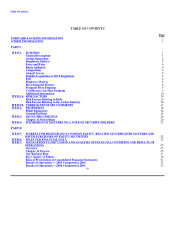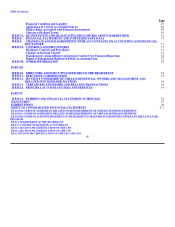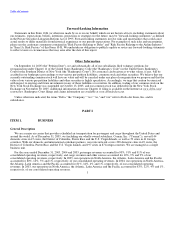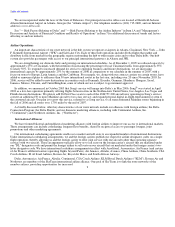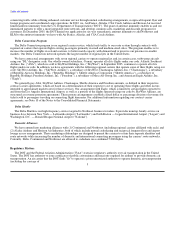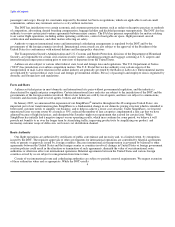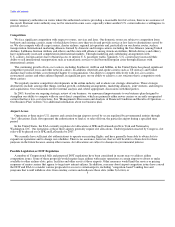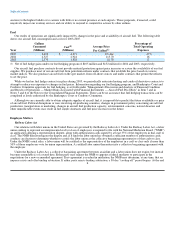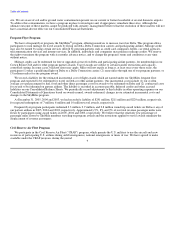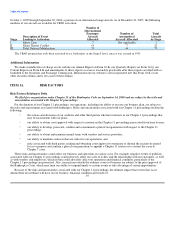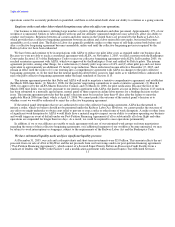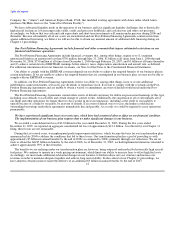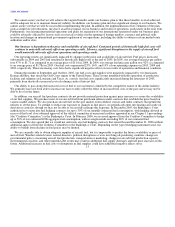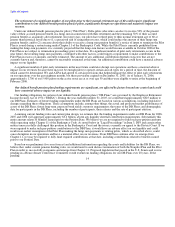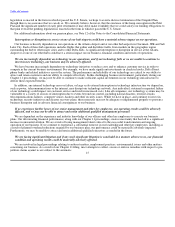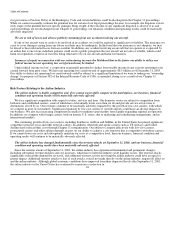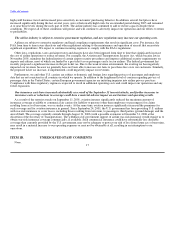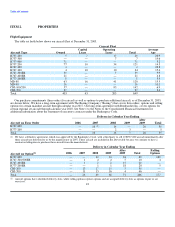Delta Airlines 2005 Annual Report Download - page 13
Download and view the complete annual report
Please find page 13 of the 2005 Delta Airlines annual report below. You can navigate through the pages in the report by either clicking on the pages listed below, or by using the keyword search tool below to find specific information within the annual report.
Table of Contents
Comair has reached agreements with ALPA, which represents Comair's pilots, and with the International Association of
Machinists and Aerospace Workers ("IAM"), which represents Comair's maintenance employees, to reduce the labor costs of both of
these employee groups. These agreements are, however, conditioned on Comair's obtaining a specified level of labor cost reductions
under its collective bargaining agreement with the International Brotherhood of Teamsters ("IBT"), representing Comair's flight
attendants. Because Comair was not able to reach a consensual agreement with the IBT, on February 22, 2006, Comair filed a motion
with the Bankruptcy Court under Section 1113 of the Bankruptcy Code to reject Comair's collective bargaining agreement with the
IBT. This motion is scheduled for hearing in the Bankruptcy Court on March 27, 2006.
See Note 10 of the Notes to the Consolidated Financial Statements for additional information about these subjects.
Labor unions periodically engage in organizing efforts to represent various groups of employees of Delta and Comair who are not
represented for collective bargaining purposes. The timing and outcome of these organizing efforts cannot presently be determined.
Environmental Matters
The Airport Noise and Capacity Act of 1990 recognizes the rights of operators of airports with noise problems to implement local
noise abatement programs so long as such programs do not interfere unreasonably with interstate or foreign commerce or the national
air transportation system. It generally provides that local noise restrictions on Stage 3 aircraft first effective after October 1, 1990,
require FAA approval. While we have had sufficient scheduling flexibility to accommodate local noise restrictions in the past, our
operations could be adversely impacted if locally-imposed regulations become more restrictive or widespread.
On December 1, 2003, the FAA published a Notice of Proposed Rulemaking ("NPRM") to adopt the International Civil Aviation
Organization's ("ICAO") Chapter 4 noise standard, which is known as the Stage 4 standard in the United States. This standard would
require that all new commercial jet aircraft designs certificated on or after January 1, 2006 be at least ten decibels quieter than the
existing Stage 3 noise standard requires. This new standard would not apply to existing aircraft or to the continued production of
aircraft types already certificated. Comments on the NPRM were filed by various parties on March 1, 2004. All new aircraft that we
have on order will meet the proposed Stage 4 standard. Accordingly, the proposed rule is not expected to have any significant impact
on us, and we and the U.S. airline industry generally supported the adoption of the NPRM. The FAA has not yet taken final action.
The U.S. Environmental Protection Agency (the "EPA") is authorized to regulate aircraft emissions. Our aircraft comply with the
applicable EPA standards. On November 17, 2005, the EPA issued a final rule adopting emissions control standards for aircraft
engines previously adopted by the ICAO. These standards apply to newly designed engines certified after December 31, 2003, and
align the U.S. aircraft engine emission standards with existing international standards. The rule, as adopted, is not expected to have a
material impact on us. However, a group of state and local air regulators have filed a petition for review in the Court of Appeals for
the District of Columbia Circuit challenging the rule on a number of grounds. We support the rule as adopted and are monitoring these
proceedings in the Circuit Court.
In December 2004, Miami-Dade County filed a lawsuit in Florida Circuit Court against us, seeking injunctive relief and alleging
responsibility for past and future environmental cleanup costs and civil penalties for environmental conditions at Miami International
Airport. This lawsuit is related to several other actions filed by the County against other parties to recover environmental remediation
costs incurred at the airport. This lawsuit is currently stayed as a result of our Chapter 11 proceedings. If the stay is lifted, we plan to
vigorously defend this lawsuit. An adverse decision in this case could result in substantial damages against us. Although the ultimate
outcome of this matter cannot be predicted with certainty, management believes that the resolution of this matter will not have a
material adverse effect on our Consolidated Financial Statements.
We have been identified by the EPA as a potentially responsible party (a "PRP") with respect to certain Superfund Sites, and have
entered into consent decrees regarding some of these sites. Our alleged disposal volume at each of these sites is small when compared
to the total contributions of all PRPs at each 8



